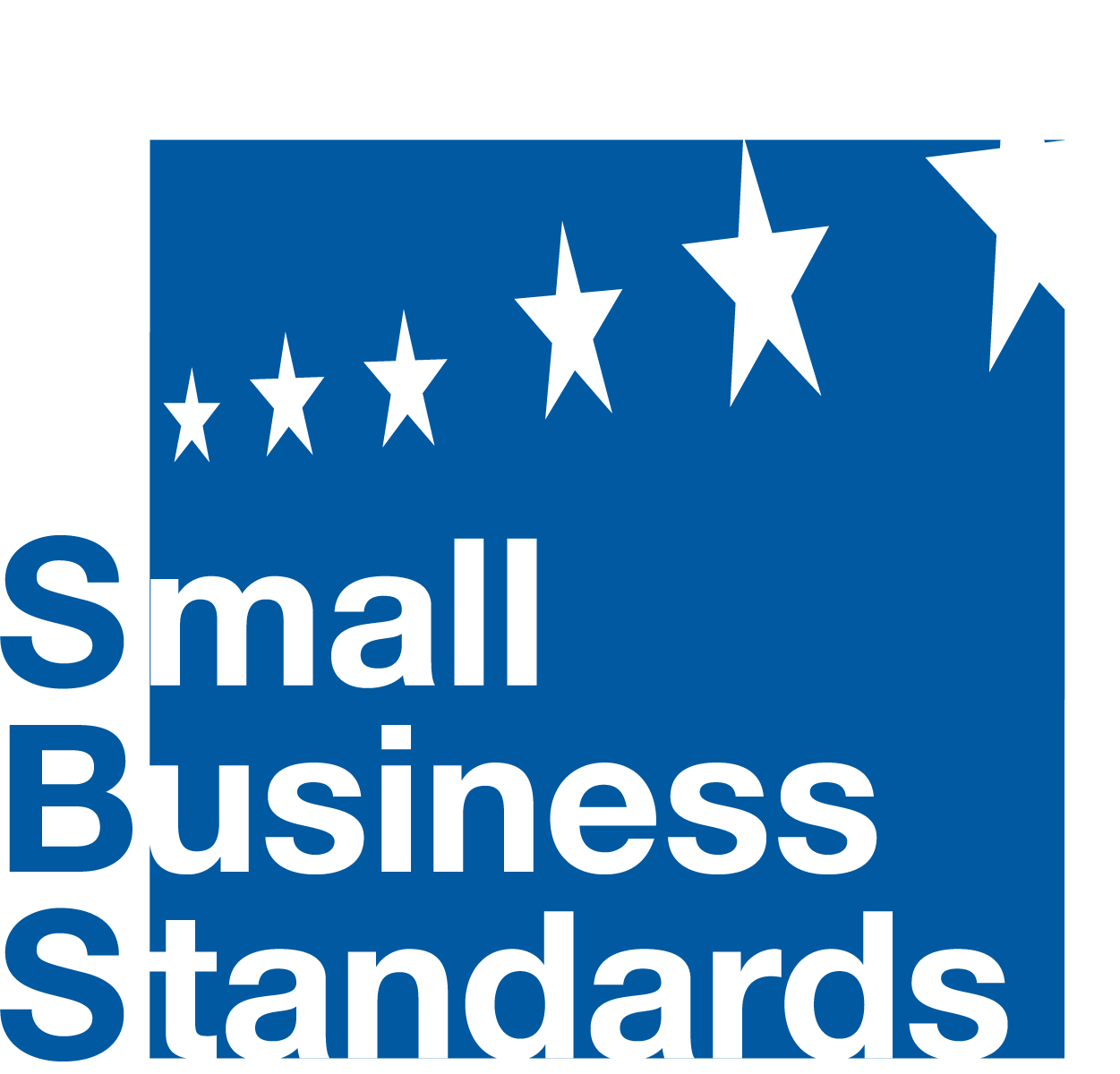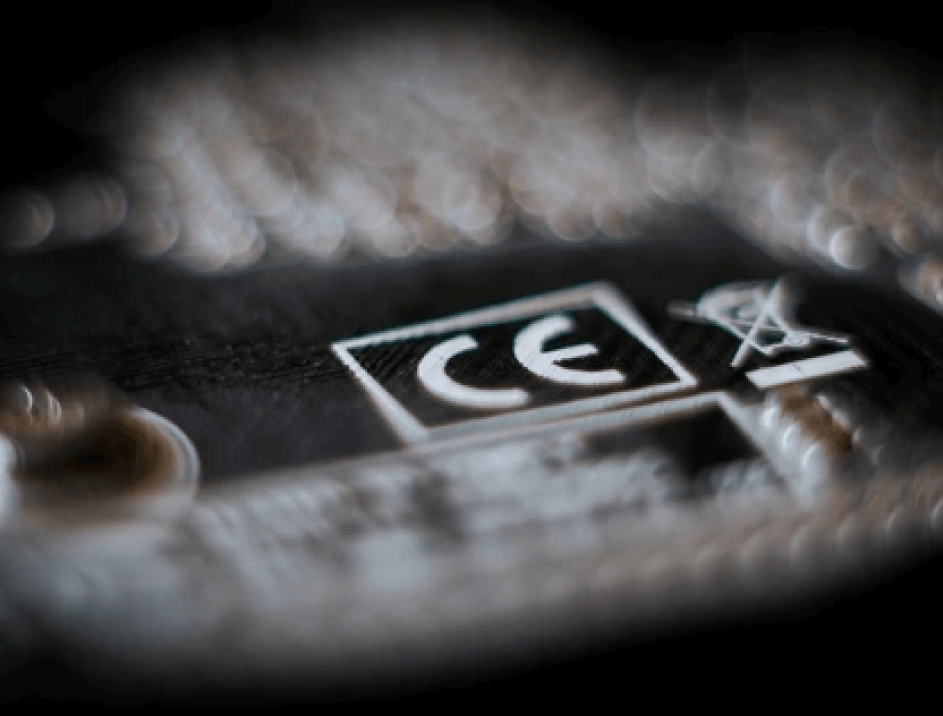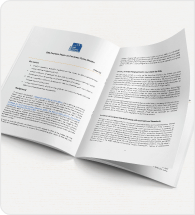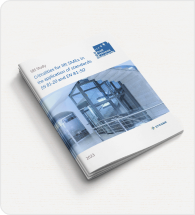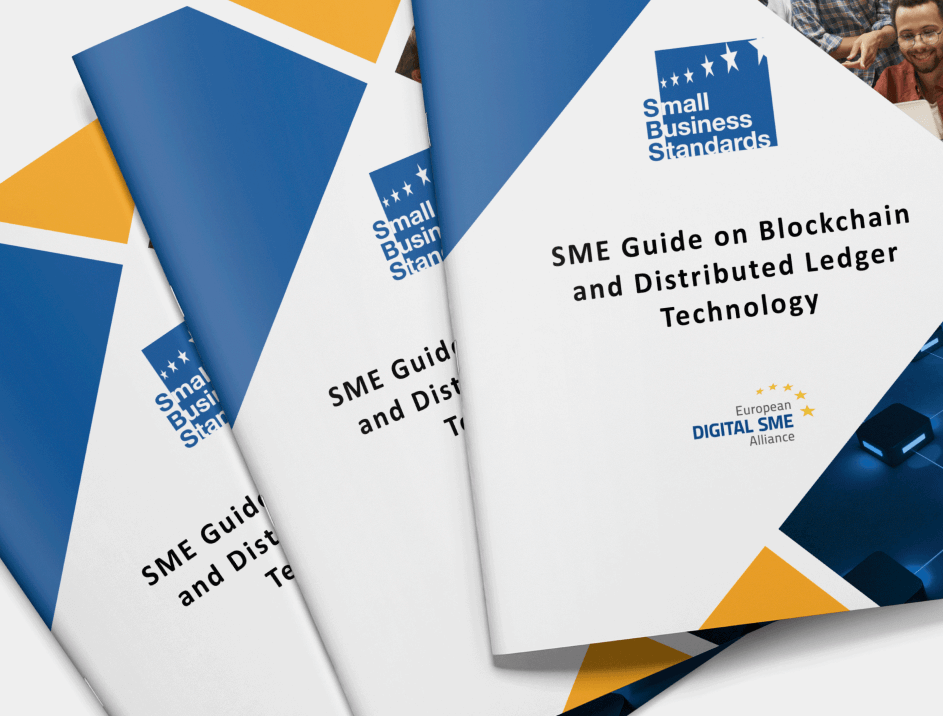Key points
• SBS and EBC welcome the publication of the revision proposal of the CPR, which is expected to establish a much-needed stable regulatory framework which can enable the sector to contribute to the efforts towards green and digital transition. SMEs support the development of the CPR as the single piece of EU legislation regulating construction
products.
• The revision needs to be clear and coherent with other pieces of European legislation. Entrepreneurs need to be able to understand the implications of the text, as simple rules facilitate compliance.
• SBS and EBC support the initiative of the European Commission to include sustainability elements in the proposal, as the construction sector is a key actor for the green transition of the European economy. However, the implications of changing to a circular economy model can be challenging for SMEs to cope with in terms of administrative burdens and technical requirements, due to their limited financial and human resources. It needs to be ensured that these will not create additional costs that would affect the final price of sustainable products, as this would reduce their demand.
• SBS and EBC agree that digitalisation is a major opportunity for innovation, improved communication, and better efficiency. However, there are only a few glimpses of digitalisation in the revision of the CPR, which could lead to a need for another revision in the medium term already to make it future proof. Moreover, it needs to be ensured that digitalisation efforts aim at simplification, instead of creating additional burdens.
• A challenge of the regulation lies in the confusing simplification procedures for micro and small enterprises. These procedures need to be comprehensive and pragmatically
designed to be broadly implemented. The manufacturing of customised products should not be restricted by additional claims or declarations. The conditions to use the simplification procedures shall refrain from costly assessments.
• A reinforced role of harmonised standards is appreciated by SMEs, as they need up-todate standards to maintain their competitiveness and growth potential by ensuring that
their products comply with EU legislation.
Background
The EU’s Construction Product Regulation (CPR) is one of the most important pieces of legislation in the construction sector which sets the legal conditions for the free circulation of construction products within the Union. Since 2016, the European Commission (EC) decided to launch a series of public consultation to gather opinions on the future of the CPR. Five different possibilities were presented ranging from repeal of the Regulation, through redrafting to maintaining the current CPR.
The European Builders Confederation (EBC) and Small Business Standards (SBS) have been expressing the view that the CPR is an instrument which is essential for the smooth functioning of the common market, but which needs to be streamlined and focused on resolving a few implementation issues. Additionally, EBC and SBS, in collaboration with FIEC and Construction Products Europe, have been pushing for an industry-led and standardisation-focused revision of the CPR, drafting a pragmatic revision option as an alternative to all the scenarios put forward by the EC.
On Wednesday 30 March 2022, the European Commission adopted a proposal for a revised Construction Products Regulation (CPR). The proposal was announced as part of the Circular Economy
Package, next to a proposal for a Regulation on Eco-design for Sustainable Products and an Eco-design and Energy Labelling Working Plan 2022-2024, to make all products in the EU market more sustainable. As such, the scope of CPR is expanded to include sustainability elements in construction product requirements.
In this framework, EBC and SBS appreciate the opportunity to provide joint feedback to the proposal for the revision of the CPR, expressing the needs of construction SMEs and crafts. We support the development of a functioning and pragmatic CPR as key to ensuring level playing field and fair competition in the construction sector.
General remarks
EBC and SBS welcome the publication of the CPR review proposal to establish a much-needed stable regulatory framework for construction products that enables the sector to contribute to the efforts towards a green and digital transition. SMEs support the development of a clear and coherent CPR as the single piece of EU legislation regulating construction products.
The inclusion of sustainability and digitalisation aspects is much welcomed and is seen as an opportunity for innovation. We also appreciate the willingness to make the most of standards to reach the environmental and digital ambitions of the EU. Sustainability aspects should target the whole value-chain, with the SMEs acting as a driving force from the initial stages, instead of simply implementing them by the end of the process.
Moreover, EBC and SBS welcome the intention of the Commission to deblock the current backlog in the citation of standards through the development of delegated acts. Considering that a well-performing standardisation process is essential for the creation of a level-playing field and their fair participation, SMEs consider the CPR acquis as a fundamental part of the CPR review.
However, it is also important to note that the text faces two challenges: enlarging the scope of the
CPR, adapting it to a circular economy approach, whilst at the same time addressing the blockage of the actual CPR with a system of delegated acts. As a result, the text is complex. SBS and EBC stress the need for a clear, consistent, and readable text, with definitions and concepts clearly delineated, as well as a clear mapping of the delimitations and links between the different European regulations of relevance.
The ECs ability to provide technical specifications under the current CPR has lacked the technical expertise necessary. We understand what point the provisions for hiring additional EC officials serve from a legalistic point of view, however this does not remedy the issue of lacking technical expertise. Therefore, we recommend that the intervention of the EC remains limited to exceptional cases and should not be intended to substitute the technical expertise gathered in the European Standardisation Organisations (ESOs).
Moreover, we would like to stress the need of education and training of SMEs on sustainability concepts and benefits, as well as digital tools and methods, to remain competitive and facilitate the
delivering of the new requirements. In parallel to the CPR, the European Commission has to focus on the re-skilling and upskilling of the sector to accelerate the twin transition.
We understand that repealing the current CPR in 2045 is intended to allow the industry, SMEs included, to adapt to the epochal changes required by a circular economy approach. We ask the
European Commission to focus its efforts and resources to deliver the results of the CPR Acquis in a timely manner, so that the dual system can effectively work, with no standardisation blockage
harming our sector, and particularly SMEs.
Another modification which could be potentially detrimental for SMEs, is the overall adjustment of Assessment and Verification of Constancy of Performance (AVCP) systems to Assessment and
Verification Systems (AVS) with the need for a third party. Such a structural change is complicating the procedural implementation of the regulation by SMEs, increasing the costs substantially.
Specific remarks
1. CPR scope and definitions
The scope of the CPR is widely extended by including 3D- datasets, construction products manufactured on the construction site, key parts of products, prefabricated houses, and
recycled/reused products.
Moreover, some definitions are missing while others lack clarity. For instance, the definitions of “custom-made” and “non-series” product are not specific enough to provide for simplifications and
exemptions. Importantly, as the regulation applies primarily to construction products, those need to be clearly defined. As a reminder, the construction value-chain has been requesting that the
construction products manufactured for immediate incorporation into construction works are not regulated by the CPR, as they are not entering the market.
Direct requests:
• “Services” need to be strictly defined to avoid overregulation and overlapping. The inclusion of services under the scope of the regulation is an enlargement that could potentially include an extensive range of activities. The kind of services which is intended to be covered is not clear.
• Direct installation of handicraft products not placed in the market should be clearly
excluded from the scope of the Regulation. Such products are not circulated in the Single market, therefore their CE marking is not useful and simply increases the administrative burdens. Manufacturers who are responsible for the construction works already assume responsibility for such products. While we acknowledge the precautionary approach that led the EC to include direct installation under Article 2(1) c, it needs to be clarified that it concerns uniquely elements that are placed in the market.
• The Article 2 (4) needs to be reformulated to cover “3-D printed products” instead of “3-D printing services”. This will withdraw the need of the regulation to refer to “services”, which may lead to unnecessary expansions.
•Deriving from its name, a product should be something that is produced. In Article 3 (1), “construction products” should be better and clearly defined to avoid diverse interpretations. The current definition of “construction product” is not comprehensive, and not aligned with the definition of the term 3 (3) “product”; since the latter definition of “product” includes construction products, it creates a loop fomenting misinterpretation and confusion. For instance, this results in a problem when these terms are mentioned in Article 2 regarding the application of the regulation on products such as paints and round wood logs.
•The definition 3 (42) “individually manufactured” requires a variation in terms of manufacturing methods. This needs to be deleted because it has very limited application, in relation to the simplifications provided under Article 66.
• The definition 3 (44) “custom-made products” should refer to sizes that are not clustered. Products such as bricks are produced in clustered sizes, therefore a variation in size would not result in a custom-made product per se. It is specified that the term should not be understood as a component created on site with characteristics that cannot be traced back to a replicable
model.
2. Sustainability and circularity requirements
The introduction of sustainability requirements to achieve the goals of the Circular Economy Action plan are much welcomed by construction SMEs and crafts. EBC and SBS welcome a European approach that will limit the diversity of national requirements. Recognising that such alignment will imply an increase in needs for testing and certification, we ask the European Commission to avoid additional red tape, particularly for reused products.
Another concerning responsibility for SMEs refers to the obligation of the manufacturer to regain products. In this regard, to succeed in the promotion of recovered or waste materials, it is essential that their use is cost-effective and supported by an increasing demand of sustainable products. To do this, companies need to be accompanied in the dual transition process.
Direct requests:
• The transition period to the environmental requirements under the new CPR until 2045 is imperative. This should be clearly communicated by the EC to all relevant stakeholders, especially SMEs, to avoid market distortion.
• General calculation tools should be included to avoid the necessity for a third-party assessment, which create a red tape and additional financial costs for SMEs. The use of EN 15804 and the well-established system of Environmental Product Declarations (EPDs) needs to be clearly indicated as the preferred method for declarations. Similarly, as collective declarations are cost-reducing and thus beneficial for SMEs, their use should be clearly mentioned in the Regulation.
• The definitions related to sustainability need further clarifying, and further fine tuning with relevant EU regulations such as the Eco-design Regulation. For instance, the line between the definition 3 (26) “repair” and 3 (28) “remanufactured product” is slight and may lead to confusions in the cases when a product needs to be CE marked. In practice, in cases where a faulty product is repaired, minor improvements can take place too. For instance, if an old window is taken for repair, faulty components may be replaced with more modern ones, affecting its performance. It is not clear if this is considered a “transformative process” and thus the product is considered “remanufactured.”
• In Article 12, it is necessary to specify the cases of used products for which a new CE-marking is needed. In principle, used products should be subject to the regulation only when their ownership is changed, such as via their placing in the market. For instance, in the case of remanufactured windows placed back in the same building, re-assessing them and fulfilling the subsequent administrative procedures would not be useful.
• In Article 22 (2) j, a system of shared responsibility for the regain of unused products is needed, potentially including a system of penalty. Regain can create additional costs, especially in the case of unique products. The burdens are focused on the manufacturers when they should be shared in a fair and proportionate manner between the actors concerned. Unequal treatment may create counterproductive incentives for the client impeding the needed mindset shift.
3. Simplified procedures
EBC and SBS welcome the ambition of the Commission to reduce the administrative burden via simplified procedures. However, this ambition is not entirely reflected in the actual content of the
text, as the current simplification procedures proposed have an extremely limited application. Clear and practical simplifications are of high significance for SMEs.
Simplification should not lead to less reliable products. By applying simplified procedures only to SMEs the quality of their products might be questioned. Therefore, the provisions should target types of products with a special focus on craft products instead of company size.
Direct requests:
•EU legislation must increasingly become SME-friendly and then adapted to the needs of large companies, and not vice versa, as this risks to create frequent exceptions targeting microenterprises and SMEs.
• Simplification procedures should not be linked to the size of the manufacturer, but to the Assessment and Verification System (AVS) or product category.
• The concept of “shared type testing” needs to be introduced to the proposal as it is widely applied by SMEs to reduce costs by using the test results obtained by another manufacturer.
• Article 65 applies only to microenterprises and should be extended to all SMEs and craft enterprises. Not many microenterprises fall into the category that will benefit from this procedure.
• Article 65 (2) needs to be deleted, because the assessment performed by a Technical Assessment Body (TAB) or Notified Body (NB) is costly. This Article raises a main
contradiction: while it gives the possibility to treat a product under AVS 3 in accordance with AVS 4, this process still needs to be confirmed by a TAB or NB. In this case, no simplification is
accomplished since the main burden to avoid lies is the assessment procedures. SMEs should be trusted as responsible for their declarations.
• Article 66 needs to be redrafted in a comprehensive manner, as the use of “and” and “or” creates confusions on which type of products are covered. In any interpretation, the
obligations should differ according to the AVS of the product, as the assessment and certification by a NB or TAB would not be relevant for AVS 4.
• A solution to the above comments would be a combination of some elements of Article 65 with Article 66, which allows treating custom-made, non-series products in AVS 4 instead of AVS 3, without referring to the size of the enterprise.
4. Exemptions
Like the simplifications, exemptions are helpful for specific products, if they do not create confusions. In certain cases, the proposal grants Member States the possibility to provide exemptions. This risks to disrupt the harmonised zone which is sought after by the rest of the text. Furthermore, the lack of a Declaration of Performance (DoP) for a product could lead to unsafe construction works due to the unavailability of the performance information. Eventually, the unavailability of product information will inhibit the drawing of a DoP for used products.
Furthermore, the lack of a Declaration of Performance (DoP) for a product could lead to unsafe construction works due to the unavailability of the performance information. Eventually, the unavailability of product information will inhibit the drawing of a DoP for used products.
Direct requests:
• In Article 2 (5), exemptions should not be granted at the national level but rather to the European level, as this will not disrupt the harmonised zone.
• Considerations related to heritage conservation introduced in Article 10 (1)c are not sufficient to cover all the possibilities and need to be broadened. In many cases, manufacturers who create products for historic/classified buildings would not be able to meet the essential requirements, due to their specific nature.
• In Article 10 (2) it is unclear how a Member State will be able to verify that a product will not circulate outside its borders. Practical details need to be specified.
5. The standardisation system
A well-performing standardisation system is essential for the creation of level-playing field in the construction sector, with a fair participation of the overwhelming majority of SMEs. EBC and SBS welcome the fact that standards are kept as the core of the CPR, as requested for years. At the same time, they welcome the attempt of the Commission to provide solutions to the timely delivery of standards.
However, a short-term, concrete and quickly applicable solution to the current backlog of citation of standards is not evident in the text. Currently, the CPR Acquis process provides an initiative that could support this objective. EBC and SBS ask the EC to accelerate the Acquis process and to ensure sufficient resources to secure the progress of the Acquis Subgroups.
Moreover, the concern for the affordability of construction products standards is much welcomed by SMEs. However, the concept of affordability needs further elaboration, taking into account elements such as the cost of accessing the standards in relation to the price of the product.
Direct requests:
• The European Standardisation System should be prioritised in accordance with the EU Regulation 1025/2012.
• The European Commission should fully consider the alternative industry proposals by SBS, EBC, FIEC and Construction Products Europe with short-term solutions to the backlog of citation of standards.
• The timely delivery of quality standards needs to be based in the development of a better collaboration mechanism between the EC, CEN and the organisation of TABs.
• Article 4 should clearly state that the development of delegated acts by the European Commission will be used in exceptional cases and only as a fall-back solution. A set of strict
and transparent criteria needs to be described.
• The Article 34 (4) should better reflect that a standard cannot be considered a single document, and normative references may substantially increase the costs.
6.Streamlining information provision
EBC and SBS consider the attempts to avoid overlapping between the DoP, Declaration of Conformity (Doc) and CE marking particularly important. To further facilitate the collection and exchange of information, digital solutions are also introduced, but to a limited extent and not exploiting their full potential.
Additionally, the Article 18 referring to alternative markings creates some limitations which may cause additional costs. Indeed, it is typical for manufacturers to have common packaging across continents.
For instance, a CE mark for Europe can exist next to a UL mark for America, with both usually referring to essential characteristics (e.g., reaction to fire) without any overlap in test or assessment methods.
Direct requests:
• Uploading documents in a permalink should be mandatory in Article 15. This will facilitate the reuse of products since their information will be accessible with more ease for the drawing of a DoP for used products.
• In Article 18, the reference to markings describing essential characteristics constraints the possibility of CE marking to coexist with other international standards. The reference to essential characteristics should be removed as it is too broad and will create an unnecessary need for double packaging.
• Article 18 sets a minimum distance for other markings to respect when placed along to CE marking. For smaller products this would mean different labels or packaging for different markets, which needs to be avoided.
7. Digitalisation of the construction sector
SBS and EBC welcome the digitalisation of information and documentation, as this will reduce administrative burdens. Including elements of digitalisation is positive, but more ambition is needed to make the regulation future-proof and avoid early revisions of the CPR.
Regarding the creation of a Digital Product Database in Article 78, this needs to be established according to the needs of the CPR, and not duplicate the example of the Eco-design requirements for Sustainable Products (ESPR).
However, the establishment of such a digital database raises questions in terms of data ownership and maintenance. Confidentiality of data, as well as affordable access to the database, needs to be ensured. The solution could be a centralised database managed by the European Commission provided that it meets the needs and demands of the construction industry.
Direct requests:
• The database or system foreseen in Article 78 must not develop into a complex and costly fulfilment. The concept is not further developed in this version, but there are various aspects to be considered, that need to be mentioned in the proposal:
-The digital database or system should be used for storing and exchanging all relevant information on a product, not only focusing on sustainability-related information.
– A centralised solution would allow better transparency and accessibility.
– It needs to be developed in an open dialogue with relevant stakeholders, to better respond to the needs of the market.
– The relation with the Digital Product Passport needs to be complementary, while ensuring the interoperability of data.
• Article 19 (5) sets the obligation that all economic operators upload the relevant data to the database within two months after its creation. This period is too short, especially for SMEs, which may have several products to insert and not enough human resources or adequate knowledge to engage on this. A longer transition period needs to be ensured. In addition, a training system needs to be created, to promote a uniform and systematic way to register products into the database, while considering the time and resources required.
8. The role of Notified Bodies
Annex V introduces some significant changes on the AVS 3. As such, the manufacturers can assess the performance of their products without the involvement of a Notified Body (NB), which can be partially positive. However, the manufacturer cannot declare any certification without the involvement of a NB. In practice, SMEs will still have to rely on test laboratories for the assessment of the performance of their products, which is a hindrance to their activity. Moreover, cascading systems, which are widely used by SMEs, are undermined when a third-party assessment becomes obligatory.
In the new system the NBs can perform 20 random checks, which in most cases represent an unbearable cost to SMEs. Moreover, 3D-printed products are usually produced as unique products, so
producing 10 samples of them to provide them to notified bodies will not be cost-effective. What is more, the Article 60 (5) provides the NBs the possibility to restrict, suspend or withdraw certificates. All these changes give responsibilities to the NBs that go beyond their expected roles and competences.
Direct requests:
• The role of Notified Bodies should be limited so that the activity of economic operators is not restricted.
• The AVS 3 needs to be adapted with elements of the current AVCP system, in a way that if a third party is used for assessment, the assessment does not need to be validated by a NB. The number of checks to be performed by NBs must be revised according to the product and its relative cost. While the increased costs for this procedure are expected to be absorbed by the market, it has to be kept in mind that the increased administrative burden disproportionately affects SMEs. SMEs with narrow product portfolios will have difficulties in uniformly reflecting the additional costs in their pricing structure. Furthermore, testing has to be performed before the product goes to market. This increase in up-front costs equates to the need for larger seed capital, which is a grave obstacle for SMEs.
9. The European Assessment Documents (EADs)
EBC and SBS support the priority given to standards and delegated acts in contrast to European Assessment Documents (EADs), which are not considered harmonised technical specifications. However, the legal status of EADs is unclear. The fact that EADs do not qualify as harmonized technical specifications, creates the potential for member states to impose additional national requirements, disrespecting EADs issued by other Member States. EADs should therefore be treated like harmonized standards in performance and conformity assessment procedures. Moreover, certain practical details of the development of EADs need clarification to assure their correct application so that proliferation of EADs is avoided.
Direct requests:
• The coexistence of EADs with national requirements needs to be further clarified, in order to avoid national measures. For this reason, any additional national requirements must be outlined from the European level and limited to certain areas of application. Usually, Member States establish more complex systems than the ones indicated in European Regulations, and this creates bureaucratic burdens.
• Article 35 (2) iii needs clarifications on the meaning of “appropriate method”. In the case a harmonised technical specification with a non-appropriate method co-exists with an EAD with an appropriate one, an undesirable competition between the two documents will be created.
• There is a contradiction between Articles 35 (2) b and 42(1). While Article 35 (2) b mentions that the development of a European Technical Assessment (ETA) is possible if a harmonised standard (hEN) is not planned to be adopted in the next two years, Art 42(1) contradicts this by stating that an ETA can be issued even when a standardisation request exists, until the citation of the standard in the Official Journal of the EU. This needs to be clarified to avoid the development of unnecessary ETAs.
• Article 36 (4) should be amended to clearly refer to the withdrawing of any EAD with a duplicate scope to a harmonised technical specification. This would avoid doubts of
duplication in the case of different technical requirements.
• In Article 64 (1), the cascading Initial Type-Testings (ITTs) need to be allowed for productscovered by EADs, to allow the reduction of costs.
10. Market Surveillance
The proposal seeks to streamline market surveillance, by setting minimum requirements on the number of checks to be performed by authorities and a minimum level of human resources. EBC and SBS widely support these efforts to structure and coordinate a unified market surveillance system, including a complaint portal, as this is necessary for the establishment of fair competition.
However, we express our concerns that authorities reach the minimum number of checks by targeting documentary checks instead of targeting non-performance compliance. Most SME non-conformities are related to mistakes on the completion of the documents, rather than on the performance of their products. It would be useful to develop further guidance to support SMEs meet their administrative obligations, instead of imposing severe sanctions due to incorrect documentation.
Direct requests:
• Market surveillance should focus on the evaluation of performance and conformity instead of documentation requirements.
• In Article 23, the management of notifications of non-conformity and online sales would be better coordinated at the European level, to reinforce a unified European system.
• Distance sales of construction products would be monitored more effectively by a European authority instead of each member state separately, as proposed in Article 32.
